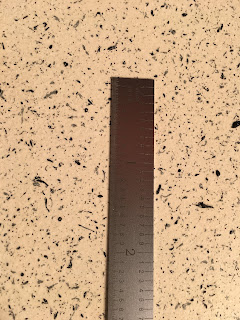Vance Atkinson (EAA Tech Adviser) and Scott Fish (Cozy Builder) visited today.
Scott is preparing for his first flight and discussed various details with Vance.
Vance examined my project's progress and advised I needed to do more sanding! LOL
Scott complimented how good the surface was looking.
I asked Scott how well the Southern Polyurethane Epoxy Primer covered and whether he had pinholes. He said he did have some pinholes where the primer was over dry micro. So he fixed the areas where he had pinholes with more micro and sprayed again.
We talked about quite a few things and time passed to quickly before Scott had to leave.



































